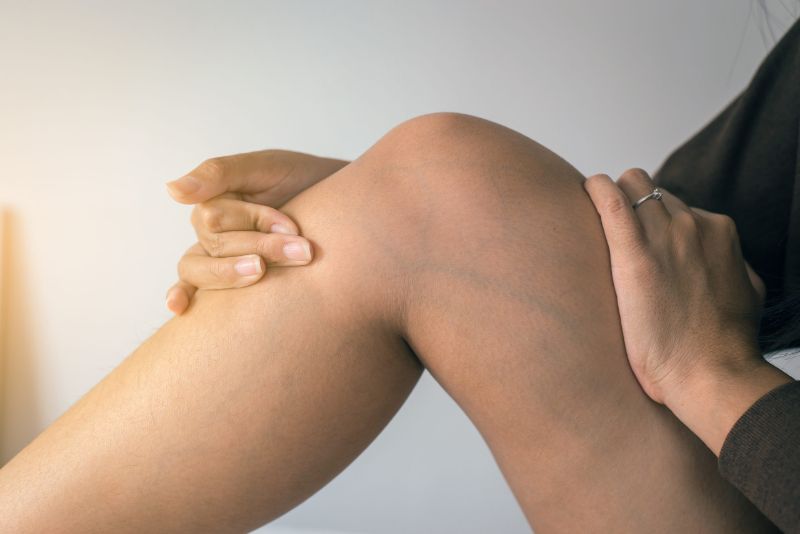Varicose Veins and VA Disability Benefits

CCK Law: Our Vital Role in Veterans Law
What are Varicose Veins?
Varicose veins are swollen, twisted veins that are visible just under the skin. Any superficial vein may become varicose, but the veins most commonly affected are those in your legs. That is because standing and walking upright increases the pressure in the veins of your lower body. For most people, varicose veins are simply a cosmetic concern; however, for others, varicose veins can cause aching pain and discomfort. Painful signs and symptoms of varicose veins include the following:
- An achy or heavy feeling in your legs
- Burning, throbbing, muscle cramping and swelling in your lower legs
- Worsened pain after sitting or standing for a long time
- Itching around one or more of your veins
- Skin discoloration around a varicose vein
In extreme cases, varicose veins can lead to more serious problems, including ulcers, blood clots, and bleeding. To diagnose varicose veins, your doctor will conduct a physical exam, including looking at your legs while you’re standing to check for swelling. You may also undergo an ultrasound test to see if the valves in your veins are functioning normally or if there is any evidence of a blood clot.
Several risk factors may increase your chances of developing the condition, such as your age, sex, weight, and family history. It is important to note that these are not the only risk factors associated with varicose veins. Instead, military service may contribute to the onset of this condition. If veterans deal with varicose veins and they believe the condition is a result of their time in service, they may be eligible for VA disability benefits.
Service Connection for Varicose Veins
In order to receive VA disability benefits for varicose veins, veterans must establish service connection – a process that involves three main elements:
- A current, diagnosed condition
- An in-service event, injury, or illness
- A medical nexus linking the current, diagnosed condition to the in-service event
The first element pertaining to a current diagnosis is not always applicable when applying for VA disability benefits for varicose veins. That is, veterans do not necessarily need a doctor to diagnose them with varicose veins. In 2007, the United States Court of Appeals for Veterans Claims decided in Barr v. Nicholson that the presence of varicose veins is not a determination “medical in nature” and is capable of lay observation. Therefore, veterans’ lay testimony describing the presence of varicose veins is sufficient to raise the issue.
In regards to an in-service event, veterans may have experienced the following, which then contributed to the development of varicose veins: standing at attention, marching, exposure to ultraviolet rays, recurring leg cramps, or not being able to move for long periods of time. Once service connection for varicose veins is established, VA will rate the condition based on its severity.
How VA Rates Varicose Veins
VA rates varicose veins under 38 CFR § 4.104, Schedule of Ratings – Cardiovascular System, Diagnostic Code 7120. The rating criteria is as follows:
- 100% – with the following findings attributed to the effects of varicose veins: massive board-like edema (i.e. swelling) with constant pain at rest
- 60% – persistent edema or subcutaneous induration, stasis pigmentation or eczema, and persistent ulceration
- 40% – persistent edema and stasis pigmentation or eczema, with or without intermittent ulceration
- 20% – persistent edema, incompletely relieved by elevation of extremity, with or without beginning stasis pigmentation or eczema
- 10% – intermittent edema of extremity or aching and fatigue in leg after prolonged standing or walking, with symptoms relieved by elevation of extremity or compressed hosiery
- 0% – asymptomatic palpable or visible varicose veins
Importantly, if veterans disagree with the disability evaluation VA assigns, they have the right to appeal for an increased rating.
Total Disability Based on Individual Unemployability (TDIU)
If a veteran’s varicose veins are so disabling that they are unable to secure and follow substantially gainful employment, they may be eligible for total disability based on individual unemployability (TDIU) – a benefit that compensates veterans at the 100 percent level, even if their combined disability rating does not add up to 100 percent. As mentioned above, varicose veins often cause problems with prolonged sitting, standing, and physical activity. Therefore, veterans may have trouble finding employment.
About the Author
Share this Post
